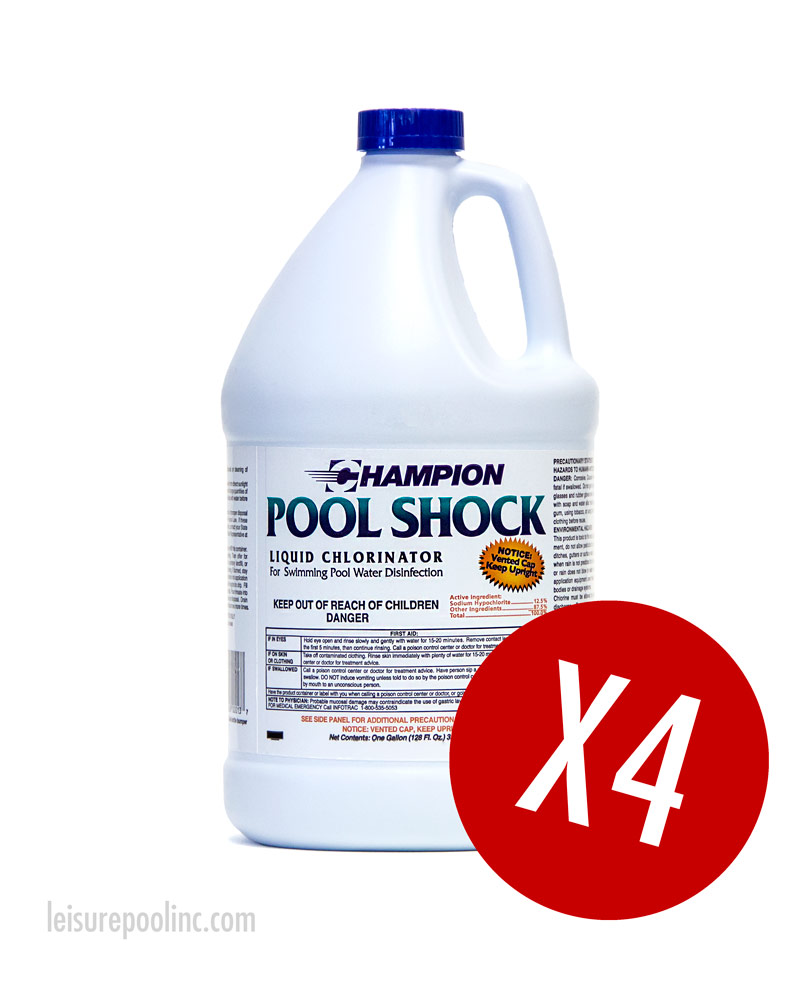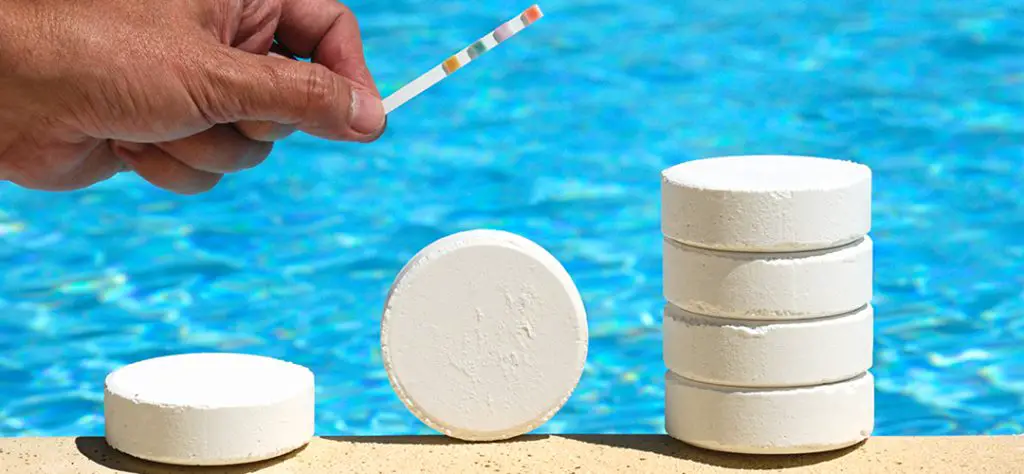Pool shock is a chemical treatment used to sanitize and disinfect swimming pools effectively. It is a powerful oxidizer that eliminates bacteria, algae, and other contaminants in the pool water.
Pool shock is essential for maintaining crystal clear and safe water conditions in swimming pools. A well-maintained pool is a source of refreshment and entertainment for many people. However, without proper care and sanitation, pools can become breeding grounds for harmful bacteria, algae, and other contaminants.
This can lead to cloudy water, unpleasant odors, and even health hazards for swimmers. To combat these issues, pool shock is used as a powerful treatment to kill bacteria and sanitize the water. By introducing pool shock into the pool, it rapidly oxidizes and destroys organic matter, eliminating impurities and making the water safe and clean. We will delve into the details of pool shock, its benefits, and how to use it effectively for optimal pool maintenance.
Understanding Pool Shock
Welcome to this comprehensive guide to understanding pool shock. Pool shock is an essential product for maintaining a clean and healthy swimming pool. In this section, we will delve into the different types of pool shock products available in the market and the science behind how pool shock works.
Types Of Pool Shock
There are several types of pool shock available, each serving a specific purpose. The most common types include:
- Calcium Hypochlorite Shock
- Sodium Di-chlor Shock
- Potassium Peroxymonosulfate Shock
How Pool Shock Works
Pool shock works by releasing a high concentration of chlorine or other oxidizing agents into the water to rapidly sanitize the pool. It effectively eliminates algae, bacteria, and other contaminants, restoring the water to a clean and clear state.
When To Use Pool Shock
Pool shock is a powerful sanitizer that helps maintain the cleanliness and safety of your pool water. Knowing when to use pool shock is crucial in ensuring a hygienic swimming environment for you and your family. By understanding the specific situations that call for the application of pool shock, you can effectively manage your pool maintenance routine and keep the water crystal clear.
After Heavy Usage
After heavy usage, such as a pool party or a period of increased activity, the water in your pool may have accumulated organic waste, oils, and other contaminants. This can lead to the depletion of chlorine levels and the formation of harmful bacteria. Using pool shock immediately after heavy usage helps restore the chlorine balance and eliminates any impurities, ensuring the water remains safe and inviting.
Opening And Closing Pool Season
Opening and closing the pool season are important events that require the use of pool shock. When opening the pool for the season, it is essential to start with a clean slate. Adding pool shock helps to eliminate any algae, bacteria, or other contaminants that may have built up during the off-season. Similarly, when closing the pool at the end of the season, pool shock is used to prevent algae growth and ensure that the water remains in good condition during the dormant period.
How To Apply Pool Shock
Applying pool shock is essential to maintain the cleanliness and clarity of your pool water. Proper application ensures effective sanitization and prevents algae and bacteria build-up.
Calculating Dosage
Before applying pool shock, determine the correct dosage based on your pool size. Refer to the manufacturer’s instructions or use a pool shock calculator for accurate measurements.
Steps For Proper Application
- Test Water Chemistry: Test the water pH and chlorine levels to ensure they are within the recommended range.
- Preparation: Put on protective gear such as goggles and gloves before handling pool shock.
- Dilution: Dissolve the pool shock granules in a bucket of water according to the calculated dosage.
- Even Distribution: Pour the diluted shock solution around the perimeter of the pool while the filtration system is running.
- Wait Time: Allow the pool shock to circulate for several hours or as per the manufacturer’s recommendations.
- Retest: After the required wait time, retest the water chemistry to ensure the chlorine levels are balanced.
- Enjoy Clean Water: Once the water chemistry is balanced, you can safely swim in your clean, sanitized pool.

Credit: www.powertownsend.com
Safety Precautions
When handling pool shock, it is crucial to prioritize your safety. The chemicals involved can be hazardous if not used properly or if safety precautions are ignored. By following the right safety procedures, you can ensure a safe and enjoyable pool maintenance experience. Here are some essential safety precautions to keep in mind:
Protective Gear
Wearing the appropriate protective gear is vital when working with pool shock. This gear helps minimize any potential contact with the chemicals, protecting your skin, eyes, and respiratory system. Make sure to wear the following protective equipment:
- Gloves: Use acid-resistant gloves to protect your hands from any splashes or spills. These gloves provide a barrier between your skin and the chemicals.
- Goggles: Shield your eyes from any fumes or possible splashes by wearing safety goggles. Ensure they fit snugly and provide proper eye protection.
- Respirator Mask: A respirator mask is essential to prevent inhalation of any harmful fumes or dust particles. N95 masks are commonly recommended for their effectiveness in filtering airborne particles.
Storage And Handling
Proper storage and careful handling of pool shock are crucial for your safety and the longevity of the chemicals. Here are some key guidelines to follow:
- Store in a Cool, Dry, and Well-Ventilated Area: Keep the pool shock containers in a cool, dry place away from direct sunlight or extreme heat. This prevents any risk of chemical reactions.
- Keep Out of Reach of Children and Pets: Store the chemicals in a secure location that is inaccessible to children and pets. Ensure the containers are tightly sealed.
- Avoid Mixing with Other Chemicals: Never mix different pool chemicals together. Mixing can lead to dangerous reactions, including chemical burns or the release of toxic gases.
- Follow the Manufacturer’s Instructions: Always read and follow the instructions provided by the manufacturer. This includes dosage, dilution, and application guidelines.
- Handle with Care: When opening the container or handling pool shock, do so with caution. Avoid any sudden movements or spills that could result in accidental contact with the chemicals.
- Dispose of Excess Chemicals Properly: If you have any leftover pool shock, dispose of it according to local regulations or seek guidance from your local waste management facility.
By carefully adhering to these safety precautions, you can ensure a safer pool shock experience, protecting both yourself and those around you. Always prioritize safety when it comes to handling and storing pool chemicals.
Common Mistakes To Avoid
Pool Shock is a crucial step in keeping your pool clean and safe for swimming. However, it’s important to be aware of common mistakes to avoid to ensure that the process is effective.
Over Shocking
One common mistake is over shocking, which can lead to bleaching of pool surfaces and irritation to swimmers’ skin and eyes.
Under Shocking
On the other hand, under shocking can result in ineffective sanitation of the pool water, allowing bacteria and algae to thrive.

Credit: www.leisurepoolinc.com
Alternative Pool Sanitizers
When it comes to maintaining a clean and safe swimming pool, pool shock is essential. However, many pool owners are turning to alternative pool sanitizers as an eco-friendly and cost-effective option. Alternative pool sanitizers are becoming increasingly popular due to their ability to effectively sanitize pool water without the use of traditional chlorine. In this article, we will explore the concept of pool shock, and how it compares to traditional chlorine as well as its pros and cons.
Comparison With Chlorine
Pool shock and traditional chlorine are both commonly used to sanitize swimming pools, but they differ in their chemical composition and application. Chlorine, in its various forms, has long been the go-to pool sanitizer, but pool shock has gained attention as a more potent and effective alternative. Chlorine requires frequent monitoring and balancing to maintain proper levels, while pool shock typically requires less frequent dosing.
Pros And Cons
- Pros:
- Chemically stronger than traditional chlorine
- Effective in killing bacteria and algae
- Reduces chloramines and odors
- Cons:
- Requires proper handling and storage
- Can cause skin and eye irritation if not used correctly
- Initial cost may be higher compared to traditional chlorine
Troubleshooting Pool Shock Issues
When it comes to maintaining a clean and sparkling pool, pool shock is an essential part of the process. However, there can be instances where pool shock may not work as effectively as expected, leading to cloudy water and residual smell. Understanding how to troubleshoot and resolve these pool shock issues is crucial for ensuring your pool stays clean and inviting for a refreshing swim.
Cloudy Water
If you notice cloudy water after shocking your pool, it could indicate a few different issues. One common cause of cloudy water after shocking is inadequate filtration. Ensure that your pool’s filtration system is functioning properly and that you’re running it for a sufficient amount of time each day. Another reason for cloudy water could be an imbalance in the pool’s pH levels. Test your pool water and adjust the pH levels if necessary. Additionally, overusing pool shock or not allowing sufficient time for it to dissipate can also result in cloudy water. Be cautious not to overuse pool shock and follow the manufacturer’s instructions for the appropriate dosage and waiting period.
Residual Smell
If your pool has a lingering chlorine smell even after shocking, it may indicate that the shock treatment wasn’t distributed evenly. Make sure to distribute the pool shock across the pool surface evenly to avoid pockets of concentrated chlorine. It’s also important to check the chlorine levels in the pool water to ensure they are within the recommended range. If the residual smell persists, consider fully circulating the pool water and running the filtration system for an extended period to help dissipate the chlorine odor.
Credit: intheswim.com
Conclusion
To sum up, understanding pool shock is crucial for pool maintenance. Keep your pool clean and safe by using the right shock treatment. Consult with a professional for best results. Regular pool shock treatments are essential for a healthy swimming environment.
Dive into a stress-free pool experience!





